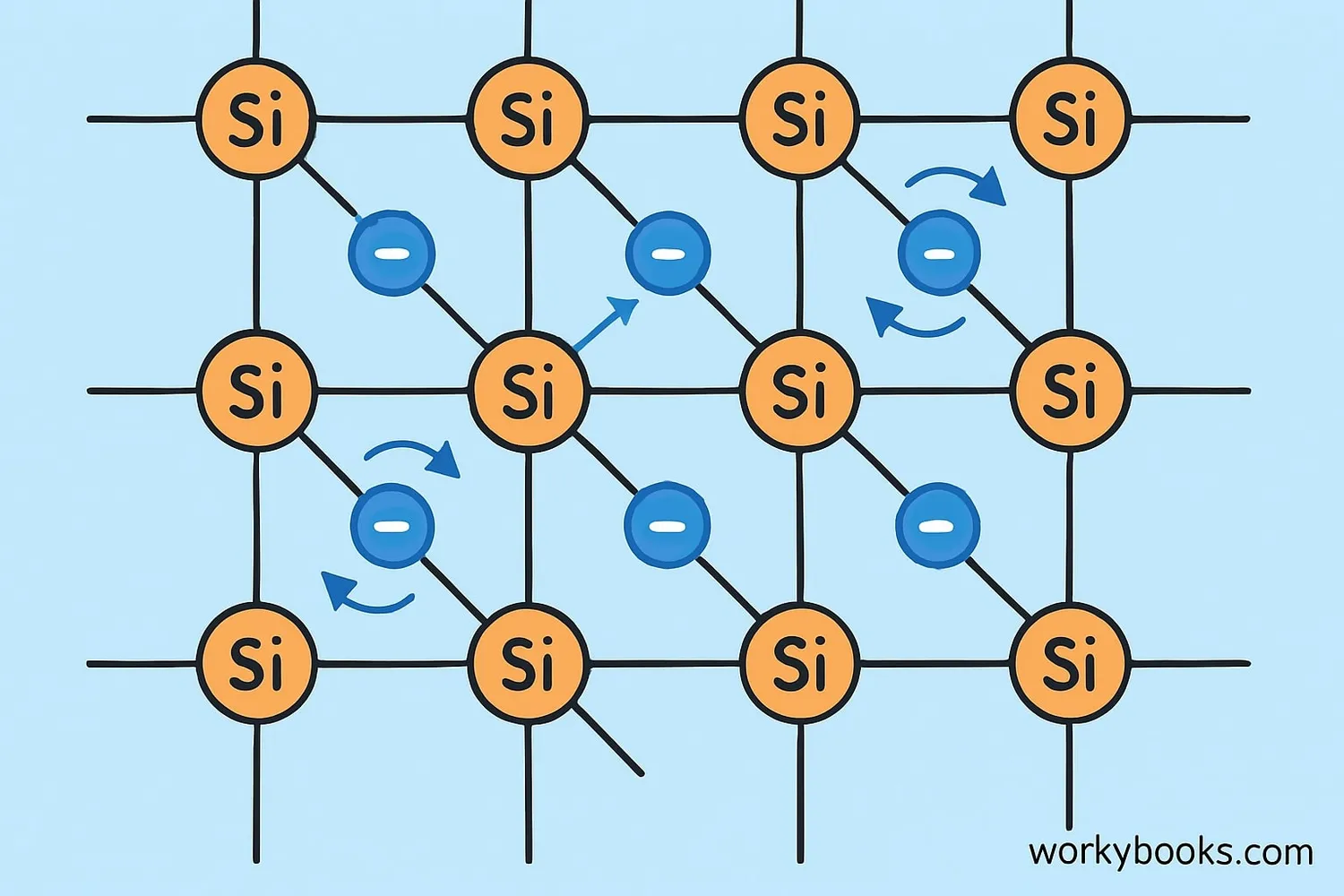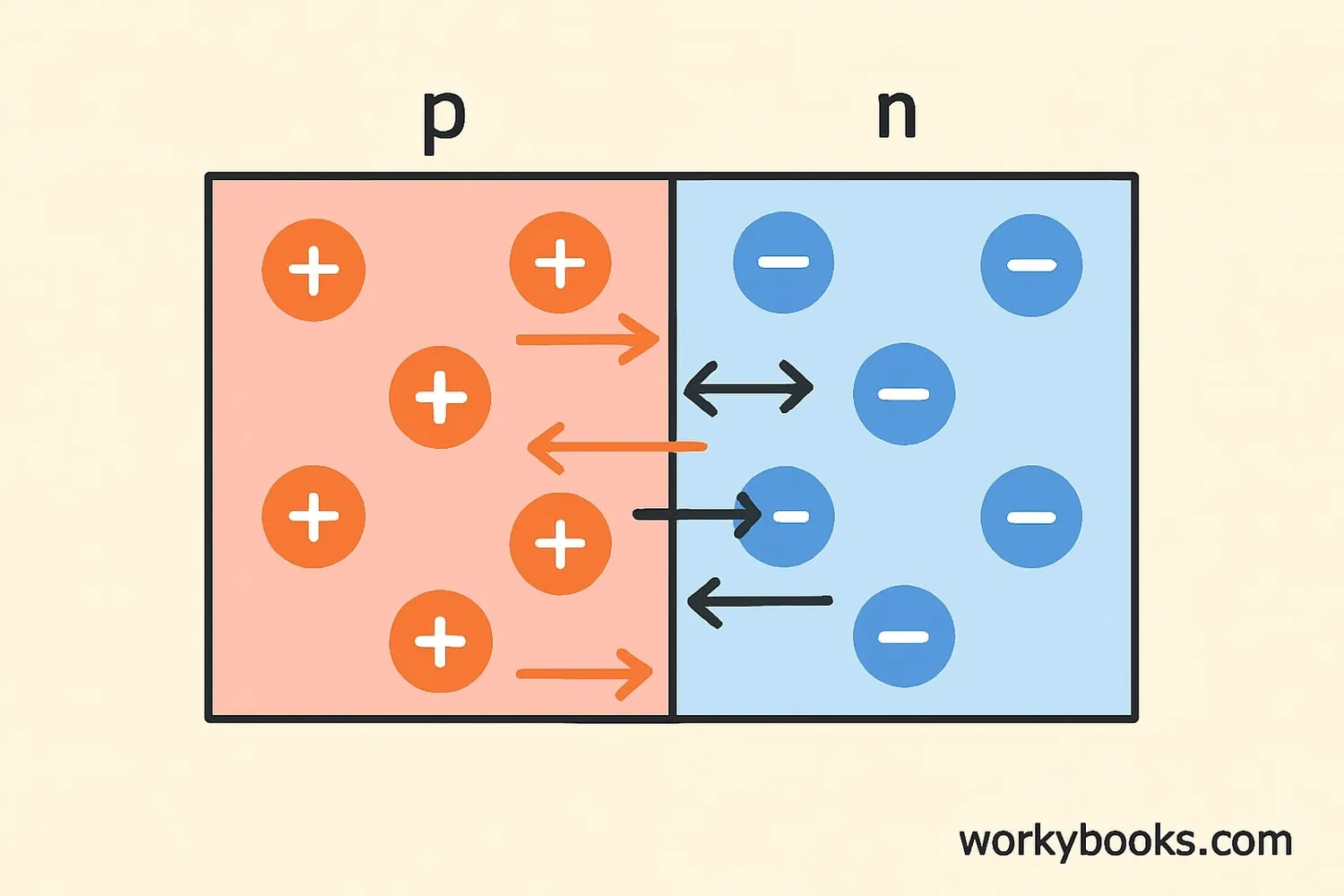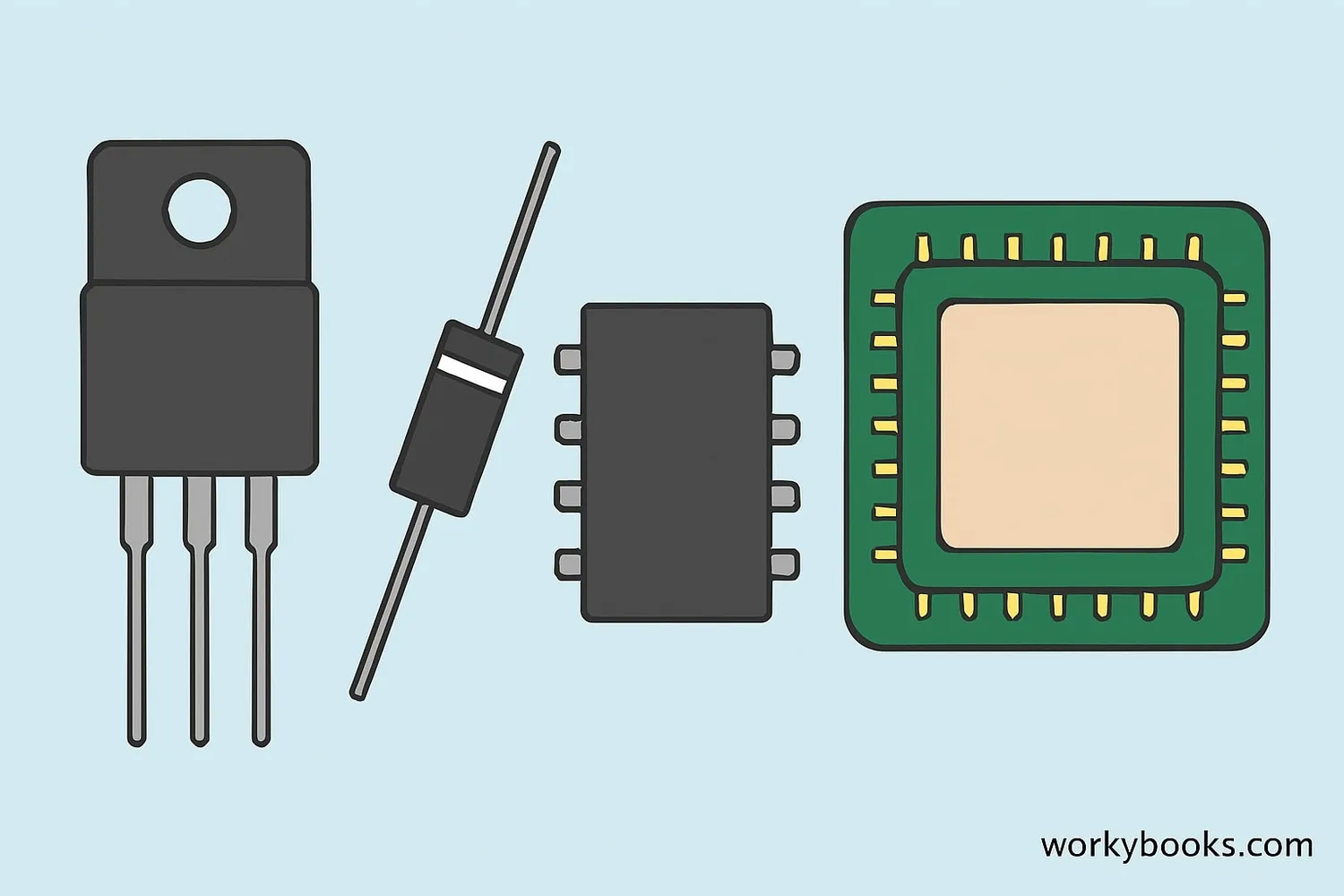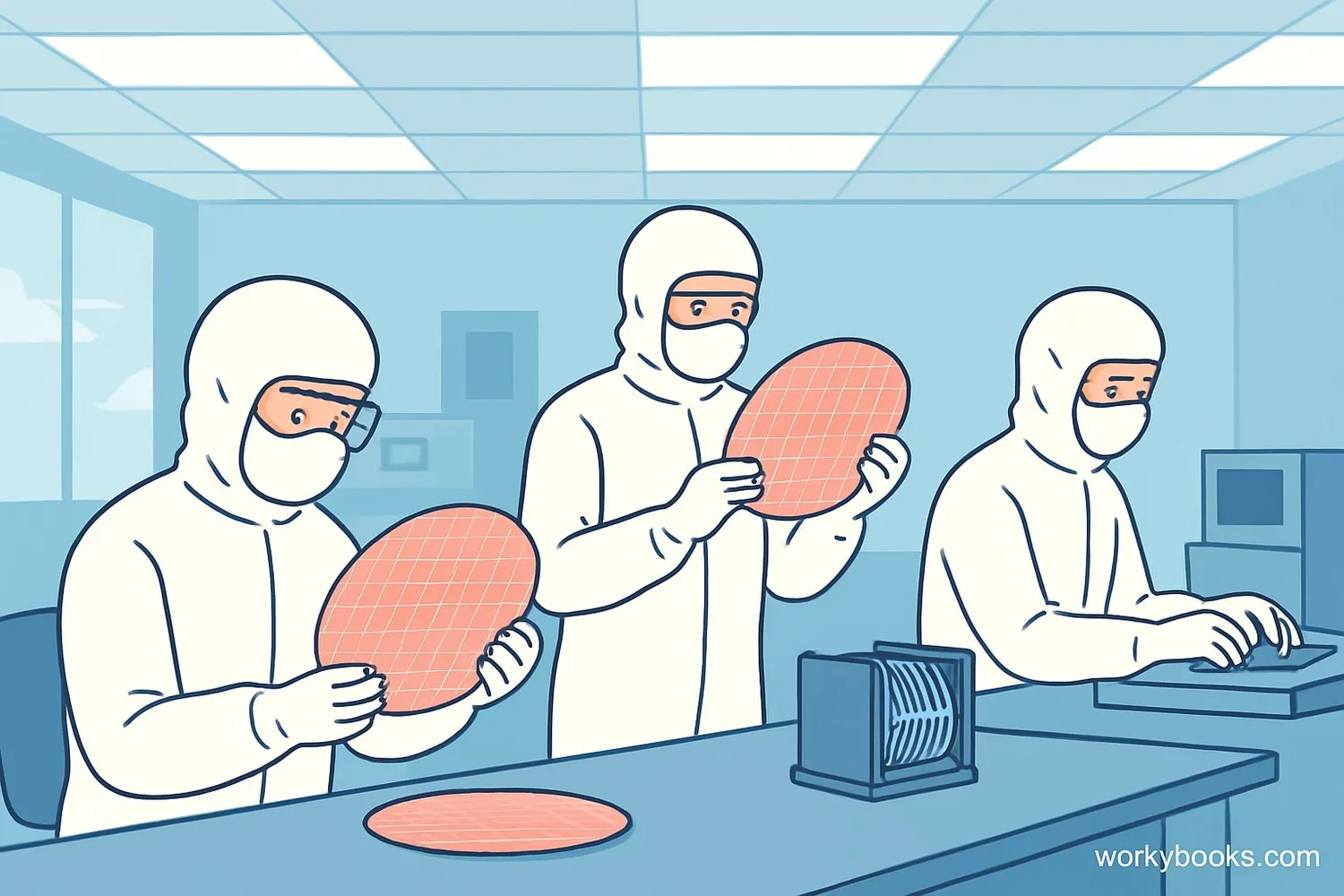Semiconductors - Definition, Examples, Quiz, FAQ, Trivia
Discover how special materials power our computers, phones, and gadgets!
What Are Semiconductors?

Semiconductors are special materials that can conduct electricity under certain conditions, but not others. They're like smart switches for electricity!
The most common semiconductor material is silicon, which comes from sand. Silicon is special because we can control how well it conducts electricity by adding tiny amounts of other elements. This process is called doping.
Unlike regular conductors (like copper wires) that always let electricity flow, or insulators (like rubber) that never let electricity flow, semiconductors can do both - it just depends on how we set them up!
Science Fact!
Silicon is the second most common element in Earth's crust - only oxygen is more abundant!
How Semiconductors Work

The magic of semiconductors happens through something called a p-n junction. This is where two different types of semiconductor materials meet:
P-Type
Semiconductor with "holes" that act like positive charges
N-Type
Semiconductor with extra electrons that act as negative charges
P-N Junction
Where P-type and N-type meet - creates an electric field
Controlling Flow
Electricity can only flow in one direction across the junction
This special property allows semiconductors to act as switches that control the flow of electricity. When we apply voltage, we can turn the flow on or off - just like flipping a light switch! This is the basic principle behind all computer chips.
Did You Know?
The first semiconductor device was the "cat's whisker" detector, used in early radios around 1900!
Semiconductor Devices

Semiconductors are used to make many important electronic components:
Diodes
One-way streets for electricity - they only allow current to flow in one direction
Transistors
Tiny switches that turn current on/off - the building blocks of computers
Integrated Circuits
Microchips containing millions of transistors working together
These devices power everything around us:
• Microprocessors - The "brains" of computers and phones
• Memory chips - Store information in computers
• Power devices - Control electricity in appliances and cars
• MOSFETs - Special transistors used in modern electronics
• AI chips - Process artificial intelligence tasks quickly
Without semiconductors, we wouldn't have smartphones, computers, video games, or modern cars!
How Semiconductors Are Made

Making semiconductors is an incredibly precise process called fabrication. It happens in special factories called "fabs" that are cleaner than hospital operating rooms!
Silicon Purification
Sand is purified into ultra-clean silicon crystals
Wafer Creation
Silicon crystals are sliced into thin wafers
Photolithography
Circuit patterns are printed using light and chemicals
Doping
Adding special atoms to control electrical properties
Testing & Packaging
Chips are tested and put into protective cases
It takes hundreds of steps to make a single computer chip! The transistors on modern chips are so small that you could fit thousands of them across the width of a human hair.
While silicon is the most common material, some semiconductors use gallium arsenide for special applications like satellite communications and LEDs.
Manufacturing Fact!
The most advanced semiconductor factories cost over $20 billion to build - that's more than 10 professional sports stadiums!
Semiconductor Quiz
Test your semiconductor knowledge with this quiz! Answer all 5 questions to see how much you've learned.
Frequently Asked Questions
Here are answers to some common questions about semiconductors:
Semiconductor Trivia
Discover some amazing facts about semiconductors:
Incredible Scale
The most advanced computer chips contain over 50 billion transistors! If each transistor were the size of a grain of rice, they would cover an area larger than 100 football fields!
Global Industry
The semiconductor industry produces more than 1 trillion chips every year! That's about 130 chips for every person on Earth. The industry is worth over $500 billion annually.
Historical Breakthrough
The first working transistor was created on December 16, 1947, by scientists at Bell Labs. This invention revolutionized electronics and earned them the Nobel Prize in Physics.
Cars and Chips
A modern car can contain over 3,000 semiconductor chips! They control everything from engine performance and safety systems to entertainment and navigation features.


